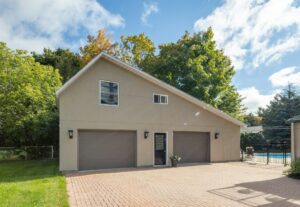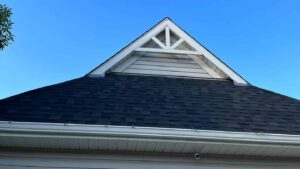“Daylighting” is a trendy new term for an age-old home practice—bringing natural light into your home.
We all know how a sunny day can lift our spirits and how comforting it can be on a cold, winter day. Bringing more of it into your home can increase your productivity, make a room look warm and inviting, and dramatically reduce energy costs.
So, what can you do to take advantage of these light-enhancing benefits? Here are 7 home improvements that will help you increase natural lighting in your home:
- Add New or Larger Windows

While this may seem like an obvious project to bring in more of the sun’s rays, the specialists at Ecoline Windows suggest you find the best ways to harness and control natural light so you’ll achieve the most benefits.
Although adding new or larger windows is the plan, South-facing windows provide a passive solar design so you’ll get the most heat gain for winter and indirect light to keep your room comfortable during the summer.
If you’re old, damaged and inefficient windows are due for replacement, you’ll find it’s the perfect opportunity to increase daylight in a number of ways. If you’ve got the wall space, you can enlarge the opening to accommodate a bigger window. Even if you stick with the same rough opening, newer window styles have narrower frames with more glass area. Consider adding a bay window to a dining room or living room to bring the triple the amount of light through three angled windows.
Look for spots in your home that are typically dark, like a stairway or landing. Adding a window there will bathe the area in light and transform the space.
Be sure research today’s energy-efficient features like double- and triple-pane windows, Low-E coatings, and Argon or Krypton gas that will provide the best insulating values as well as protect your furnishings from fading.
- Install Light Shelves

(Source: https://www.ykkap.com/commercial/product/sun-control/luminance/)
Often used in commercial buildings, homeowners are recognizing light shelves distribute light evenly, reduce glare, and significantly increase the amount of light coming in. These horizontal, shelf-like feature is placed above eye-level on a window. This allows light to bounce off into the room.
Add this element to windows with southern exposure for the most effective location. Light shelves can be installed inside or outside (or both) and can be an actual part of the window or mounted to the exterior wall.
- Widen Doorways or Knock Down Walls

Newer home floor plans are showing a trend toward more open layouts. This design allows more natural light to enter the entire space.
If your home is divided by many walls and doors, your home improvement project should include widening doorways, knocking down non-bearing walls, and opening walls by adding a pass-through area.
You’ll be amazed at how much brighter the entire home is and how much energy you’ll save by not having to turn on lights until the sun goes down.
- Add Skylights

Skylights are making a strong comeback. New styles and designs have eliminated previous service concerns so fixed, non-operable units are air- and water-tight. Modern technology has also created new operable and completely retractable skylights.
To better control how much light and heat comes into your room, make sure it’s not in the direct path of the sun. Skylights are an excellent addition to a bathroom renovation as it’s an effective way to get natural light there when there’s no place for a traditional window.
Control the climate in your sun-drenched bathroom with ventilation panels and remote control blinds. No ladder required.
- Install Sun Tunnels/Solar Tubes

(Source: https://www.velux.ca/en/products/sun-tunnels)
Skylights are a great way to bring in natural light to rooms without a lot of available wall space. Unfortunately, they can only be installed in areas where there’s nothing above them. To overcome this obstacle, you can now use sun tunnels or solar tubes that don’t require direct roof access.
This tubular daylighting device is installed between the roof and the ceiling and are coated on the inside with reflective materials or pipes. A plastic dome on top draws in a large amount of light while screening out infrared rays. This reduces the amount of heat that penetrates inside and protects furniture and fabrics from fading.
- Replace Solid Doors with Glass Doors

Another home improvement that can increase natural lighting is to remove any obstacles that block light from passing through—typically, solid doors. Replace solid doors, where possible, with glass doors, French doors, or remove the door completely so light can transcend all rooms easily.
In rooms where privacy is an issue, add translucent or frosted glass doors. You’ll still see a lot of light transference and even some reflection.
Consider replacing your front exterior door with one with windows. There are many decorative styles that will increase curb appeal, maintain privacy, and yet, let more light in. Add matching side lights and a transom window above for maximum exposure and aesthetic appeal.
The same goes for the back of the house where you can replace a solid swing door with a wide patio door with transom above. Many manufacturers provide blinds or shades between the glass to provide night-time privacy while allowing your room to be basked in sunshine during the day.
- Build in Clerestory Windows

(Source: https://www.theeastendcafe.com/clerestory-windows/house-plans-with-clerestory-windows/)
A non-traditional window style that provides exceptional daylighting and ventilation is the clerestory window. This style is placed high on a wall, close to the ceiling (above eye level) to bring in plenty of daylight to dark rooms. Churches have used these for centuries to light up dark structures, but today’s energy-efficient homes are also benefitting from these unique styles.
The ideal location is on a side of your home where the most sun exposure is present. Because of the elevated positioning, the home is protected from glaring sunshine by the roofline, overhangs, louvres, or other barrier. Privacy is never an issue either unless you’re concerned with birds peaking in.
Paint the underside of overhangs white or other light colour to enhance the reflective capabilities to bring even more natural light in.
Clerestory windows can also help with passive cooling when placed across from each other for maximum ventilation.
Conclusion
With so many benefits to health and well-being, it only makes sense to do everything you can to increase the natural lighting in your home. Home improvement projects such as replacing small windows with new larger styles, installing light shelves, widening doorways or knocking down walls, adding skylights or solar tubes, replacing solid doors with glass ones, and building in clerestory windows can all enhance light infiltration throughout your home. Not only are you improving the efficiency, look, and comfort of your home, you’re improving the quality of life for your entire family.









